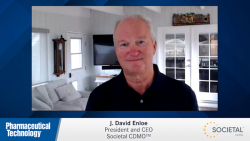
OR WAIT null SECS
- About Us
- Advertise
- Contact Us
- Editorial Info
- Editorial Advisory Board
- Do Not Sell My Personal Information
- Privacy Policy
- Terms and Conditions
© 2025 MJH Life Sciences™ , Pharmaceutical Technology - Pharma News and Development Insights. All rights reserved.
When Will Pharmacogenomics Live up to its Promise?
In about 20 years and with a cost of around $10 billion. That’s the estimate given by researchers at the Beth Israel Deaconess Medical Center in the US who used quantitative modelling to forecast how much time and money would be required before pharmacogenomics could be expected to be used in clinical care.
In about 20 years and with a cost of around $10 billion. That’s the estimate given by researchers at the Beth Israel Deaconess Medical Center in the US who used quantitative modelling to forecast how much time and money would be required before pharmacogenomics could be expected to be used in clinical care.
There has been a lot of hype about the potential of pharmacogenomics to transform medicine. Drug-related adverse events can cost healthcare systems tens of billions of dollars every year, but pharmacogenomics could alleviate this burden by enabling exact dosages to be chosen based on a patient’s individual genome. The problem, however, is that we have been hearing about this promise for years, but implementation has been slow.
“If you look across medicine, you can see specific places here and there where genomics is really starting to change things, but it’s been hard to know how it all adds up in the big picture,” Ramy Arnaout, a founding member of the Genomic Medicine Initiative at Beth Israel Deaconess Medical Center, admitted in a press statement.
Arnaout and his colleagues developed a quantitative model to estimate the time and money needed before pharmacogenomics could realistically be used to help reduce the number of adverse outcomes that occur because of genetic differences between patients.
Arnaout explained, “We know that preventable causes of these adverse outcomes - patients’ non-adherence, interactions between multiple drugs, and medical error, for example - account for only a fraction of the millions of adverse outcomes that patients experience each year. This leaves a significant number that are currently considered non-preventable and are thought to be caused by genomic variation.”
As data for the model, the team chose eight associations involving six prescription drugs (clopidogrel, warfarin, escitalopram, carbamazepine, the nicotine-replacement patch and abacavir) and one drug class, the statin class of anticholesterol drugs.
If the model proves to be accurate, we could start seeing some good indicators of early progress in the area of pharmacogenomics over the next five years or so. Or perhaps even sooner.
This morning, for example, I read a piece on pharmacogenetics on the UK’s Guardian news website about the possibility of using genetic testing to check whether children will respond appropriately to asthma treatments. While critics may complain that progress in personalised medicine and pharmacogenomics is slow, little by little, advances are still being made.


